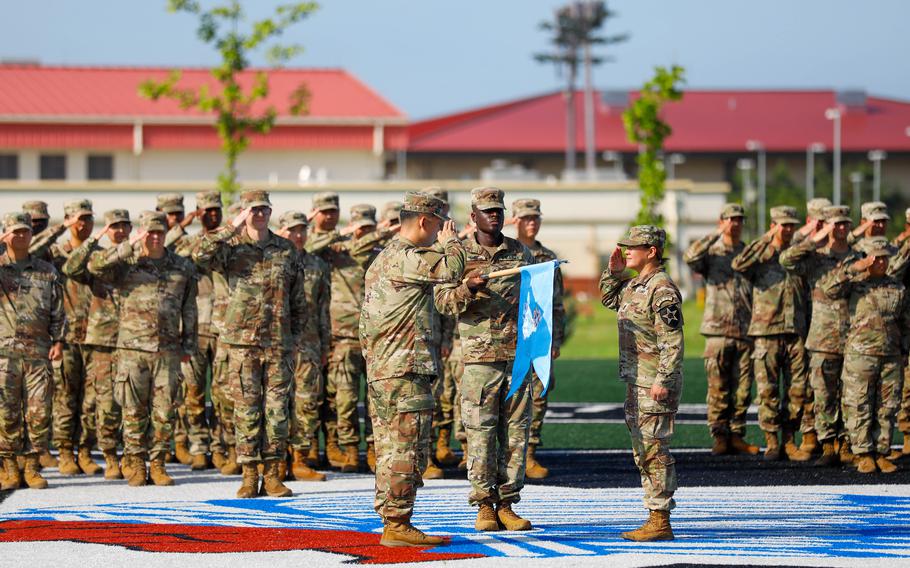
Soldiers assigned to the 528th Military Intelligence Company uncase the unit guidon during their activation ceremony at Camp Humphreys, South Korea, Aug. 5, 2025. (Wilfred Salters Jr./U.S. Army)
CAMP HUMPHREYS, South Korea — A military intelligence company with a history of action in the Korean War is back in service with the 2nd Infantry Division, the sole U.S. Army division stationed overseas.
The 528th Military Intelligence Company, which saw action during the 1950-53 conflict, was reactivated during an Aug. 5 ceremony at Robertson Field at Camp Humphreys, the Army announced in a news release the following week.
Led by Capt. Brian Park, the company collects and analyzes information on enemy forces, terrain and potential threats, the service said.
The 528th was reactivated to “supplement the operations” of the division directorate responsible for providing commanders with a broad overview of the battlefield, division spokeswoman Maj. Eileen Poole told Stars and Stripes by email Thursday.
She declined to provide information on the unit’s size and equipment, citing “operational security considerations.”
The company was not listed in an organizational chart on the division’s website as of Friday.
Approximately 12,100 soldiers are assigned to 2nd ID, which is headquartered in Pyeongtaek city at Humphreys, the largest U.S. military base overseas, about 40 miles south of Seoul.
During the Korean War, the 528th “served as the eyes and ears of the division and provided critical intelligence that shaped the course of the battle and safeguarded lives,” Headquarters and Headquarters Battalion commander Lt. Col. Eric Swett said in the Army release.
The division took part in several major engagements during the war, including against Chinese forces in North Korea at the Battle of the Chongchon River in November 1950, the release said.
The division reported about 4,940 casualties that month, the majority of which occurred while fighting Chinese forces that reinforced the North Korean army, according to a U.S. Army Center of Military History research paper published in 1990.
Several major intelligence lapses contributed to the heavy casualties against the Chinese troops, who made a “concerted effort to avoid aerial observation,” the paper said.
These efforts included marching during the night and deceiving U.S. forces by mislabeling their battalions as a division.
“By 23 November the U.N. Command had acknowledged the presence of twelve Chinese infantry divisions when in fact there were nine armies with thirty infantry divisions,” the paper said.